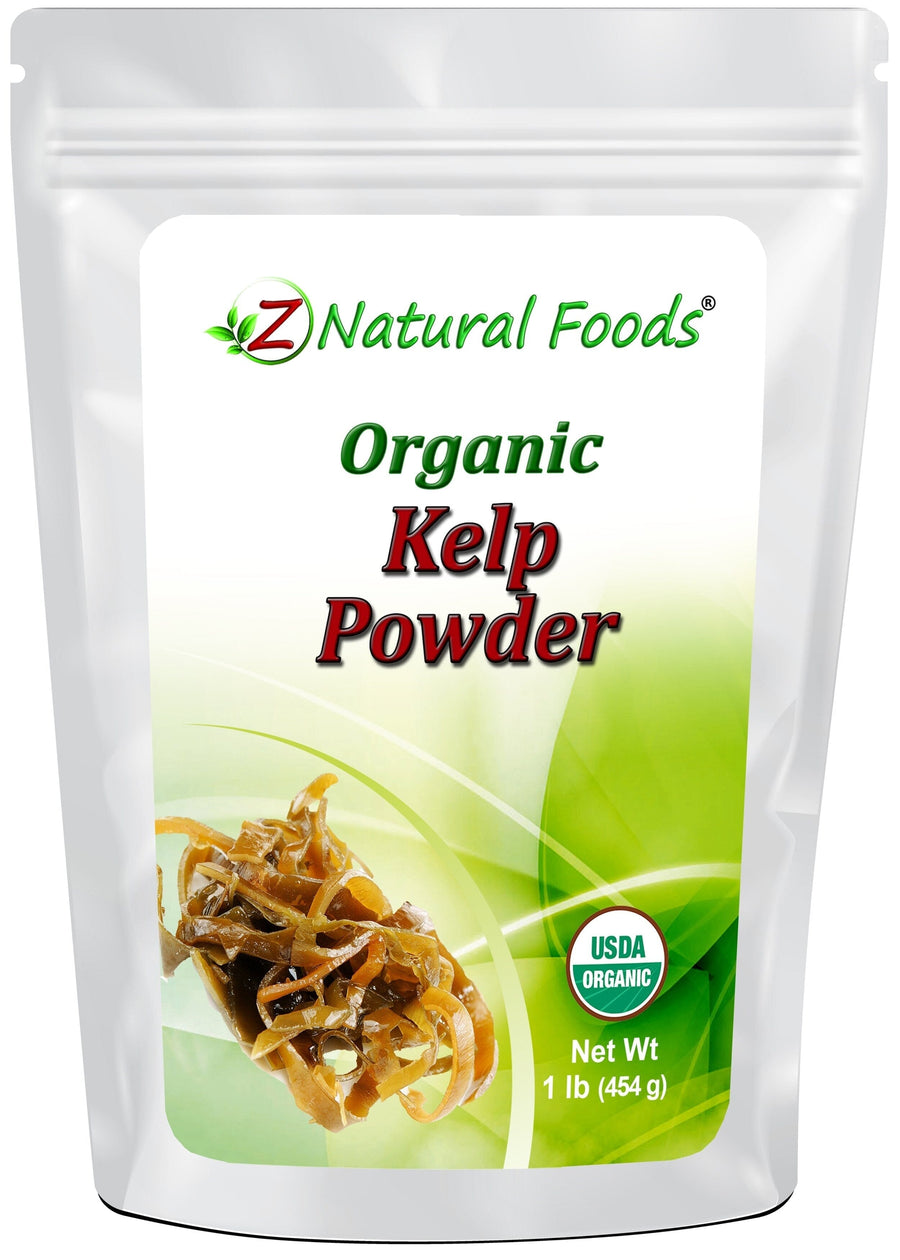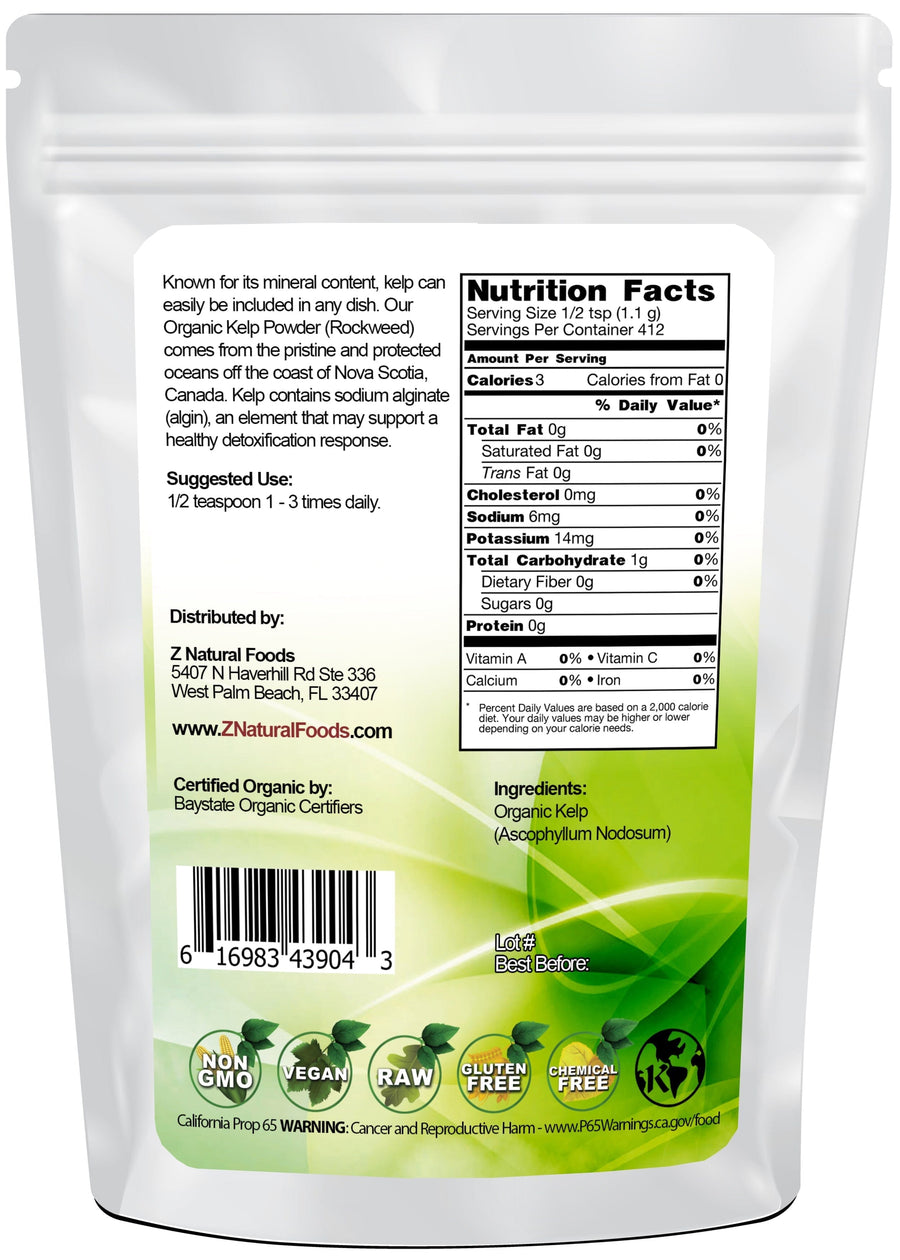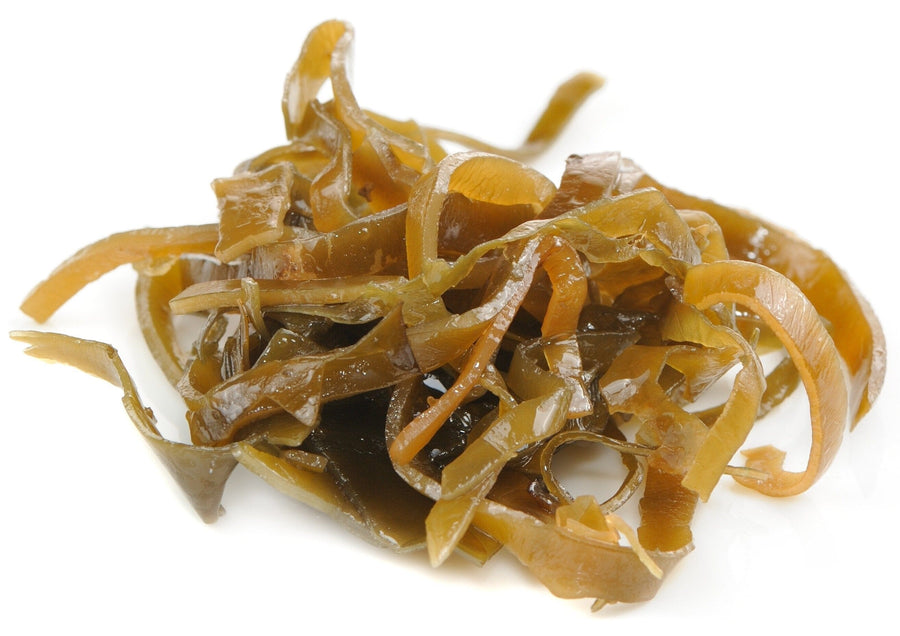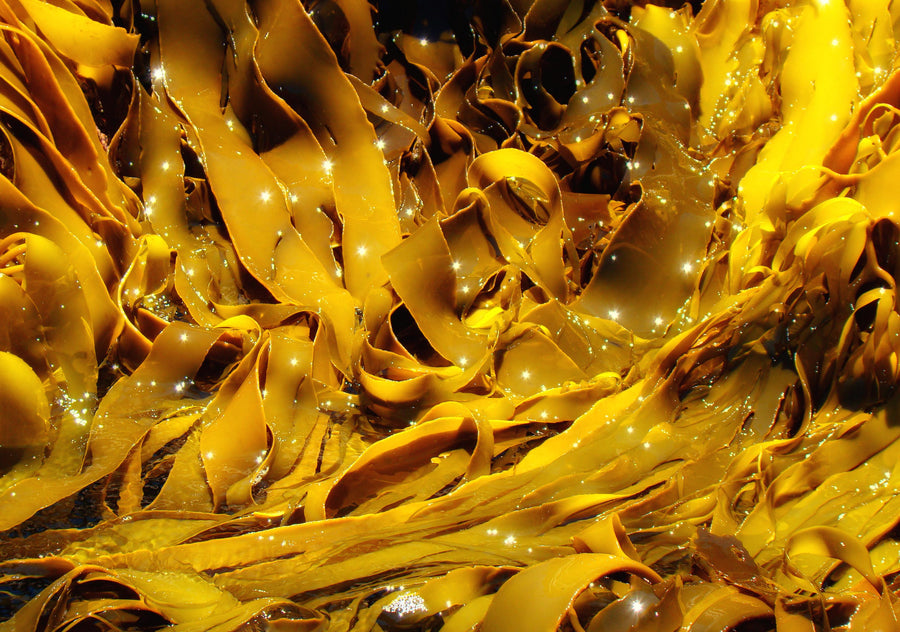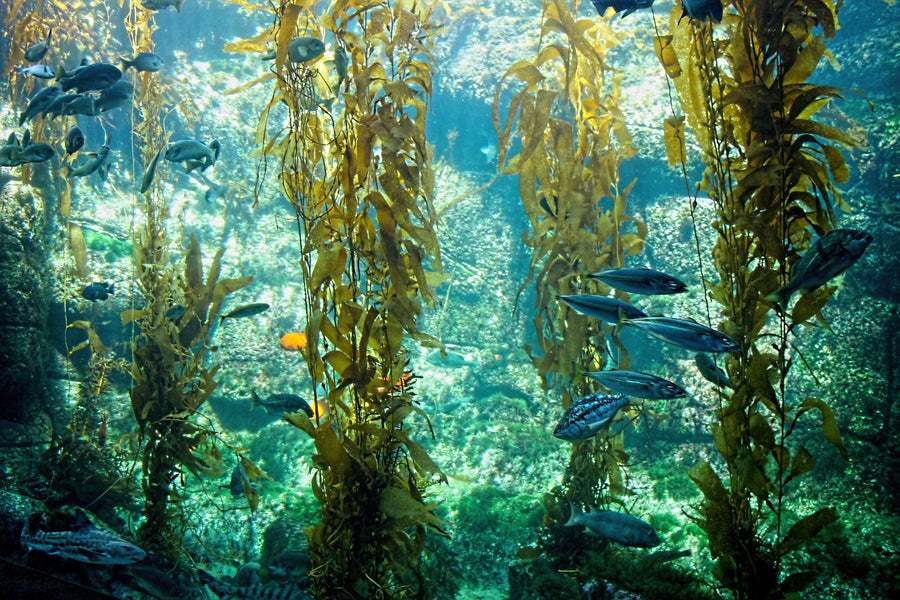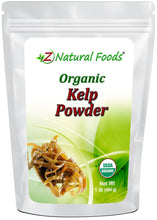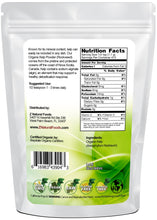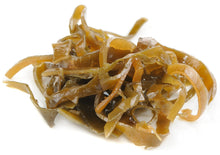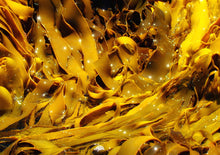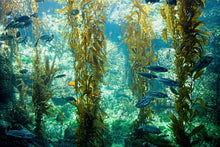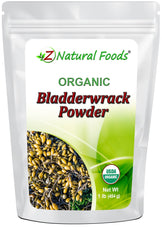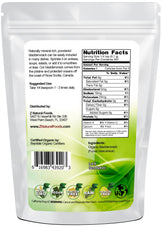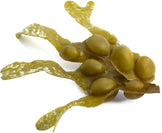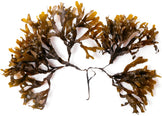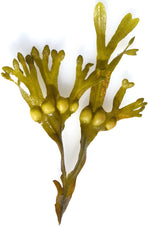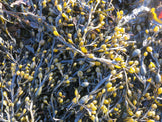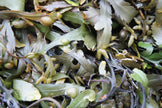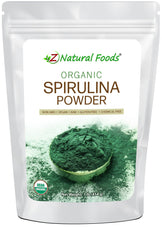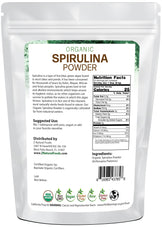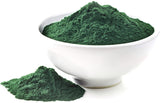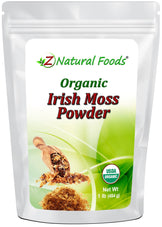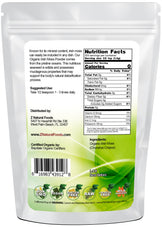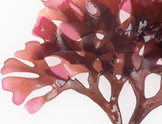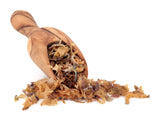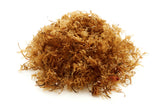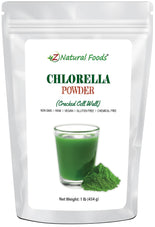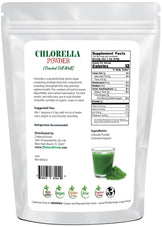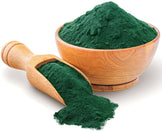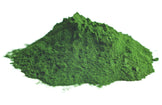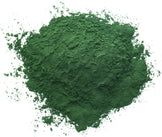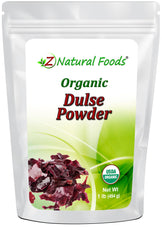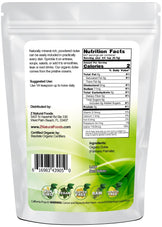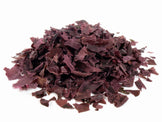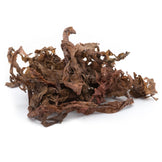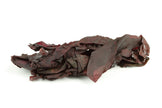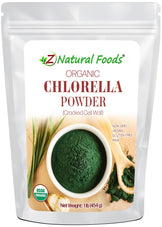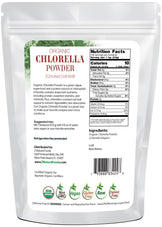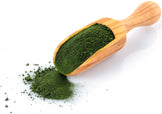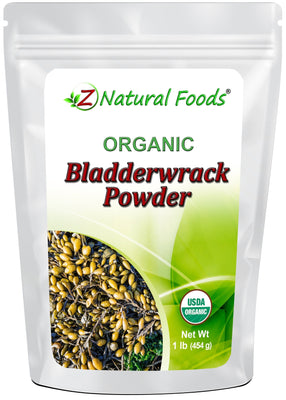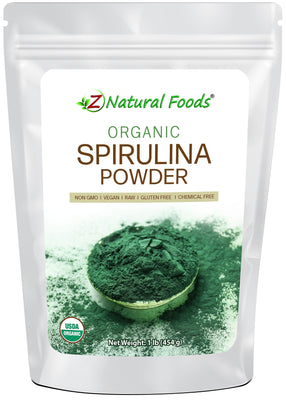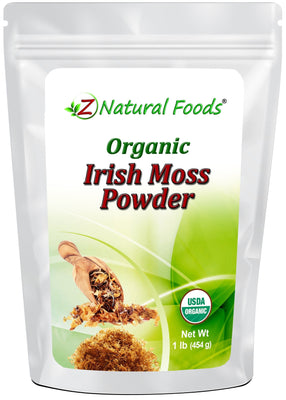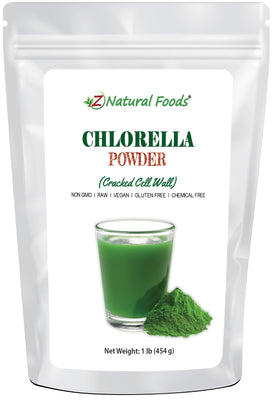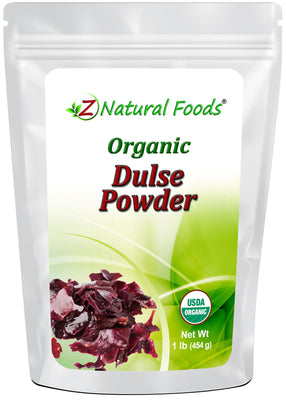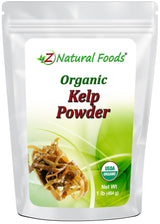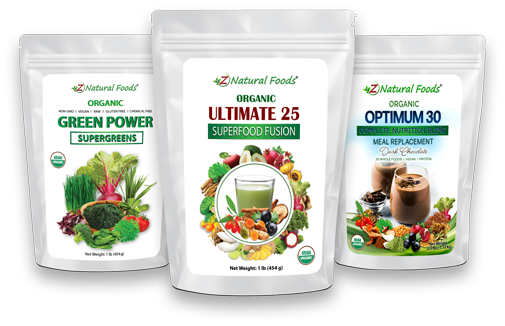About Product
Kelp, also known as rockweed, is a type of seaweed that has been part of traditional diets for centuries.
It is believed to have originated in Japan during the Edo period (1603-1868) and, since then, has been used in many Asian countries.
It is a nutrient-dense food that is a source of minerals, vitamins, and dietary fiber. Kelp powder is made by grinding the seaweed into a fine powder.
This powder has become popular in recent years as a quality food source due to its numerous qualities.
For added nutrition, kelp powder can be added to smoothies, soups, salads, and other dishes.
It can also be taken in capsule form. With its long history of use, kelp powder is an excellent addition to any food plan.
Suggested Use
- Take 1/2 teaspoon 1 - 3 times daily.
Mixing suggestions
- To increase flavor and nutritional profile, combine with our organic tomato or carrot powder. Also, add a dash to your hot soup to kick it up a notch.
Miscellaneous Facts about our Raw Organic Seaweed (Norwegian Kelp) Powder
Certification: USDA Certified Organic.
Botanical Name: Ascophyllum nodosum.
Sea Kelp’s Other Names: Rockweed, Norwegian Kelp, Kombu, Laminaria digitata, Laminaria japonica, Laminaria saccharina, Macrocystis pyrifera, Brown Algae, Horsetail, Sea Girdles, Seaweed, Sugar Wrack, Brown Seaweed, Algae, and Tangleweed.
Ingredients: Organic Kelp.
Parts Used: Whole, Kelp.
Origin: Grown and dried in Nova Scotia, Canada, and packaged with care in Florida, USA.
How to Maintain Optimum Freshness
- This product is packaged in airtight stand-up, resealable foil pouches for optimum freshness.
- Once opened, push the air out of the pouch before resealing it to preserve maximum potency.
- Keep your powder in a cool, dark, dry place.
This product is 100% natural and minimally processed:
Taste, smell, texture, and color vary from batch to batch. Go here to learn why our products may naturally vary.
The important protections we take to bring you safe and nutritious superfoods:
Please go here to discover the essential steps we take to deliver fresh, quality nutrition.
Bulk Quantities?
Need to order a large quantity of our products? We are happy to help! Please get in touch with our Bulk department to discuss the details.
* Product packaging, pictures, and origin may vary.
Sources & References
1. M. D. Guiry & Wendy Guiry (2006-11-23). "Ascophyllum nodosum (Linnaeus) Le Jolis". AlgaeBase.
2. W. R. Taylor (1962). Marine Algae of the Northeastern Coast of North America. Ann Arbor, University of Michigan Press. ISBN 0-472-04904-6.
3. S. Hiscock (1979). "A field key to the British brown seaweeds (Heterokontophyta)". Field Studies 5: 1"“44.
4. H. Stegenga, J. J. Bolton & R. J. Anderson (1997). Seaweeds of the South African West Coast. Bolus Herbarium Humber 18, University of Cape Town. ISBN 0-7992-1793-X.
5. M. J. Lynn (1949). "A rare alga from Larne Lough". Irish Naturalists' Journal 9: 301"“304.
6. D. C. Gibb (1957). "The free-living forms of Ascophyllum nodosum (L.) Le Jol". Journal of Ecology (British Ecological Society) 45 (1): 49"“83. doi:10.2307/2257076. JSTOR 2257076.
7. O. Morton (2003). "The marine macroalgae of County Donegal, Ireland". Bulletin of the Irish Biogeographical Society 27: 3"“164.
8. O. Morton (1994). Marine Algae of Northern Ireland. Ulster Museum, Belfast. ISBN 0-900761-28-8.
9. J. R. Lewis (1964). The Ecology of Rocky Shores. English Universities Press, London.
10. Schonbeck, M. W.; Norton, T. A. (1980). "Factors controlling the ower limits of fucoid algae on the shore". J.exp.mar.biol. ecol. 43: 131"“150.
11. Seip, K. L. (1980). "A mathematical model of competition and colonization in a community of marine benthic algae". Ecological modelling 10: 77"“104.
12. Seip K. L. "Mathematical models of rocky shore ecosystems". In: JA¸rgensen S. E. & Mitch W J. (Eds.) Application of ecological modelling in environmental management, Part B, Chap 13, pp 341-433.
13. Polyphenols in brown algae Fucus vesiculosus and Ascophyllum nodosum: Chemical defenses against the marine herbivorous snail, Littorina littorea. J. A. Geiselman and O. J. McConnell, Journal Of Chemical Ecology,1981, Volume 7, Number 6, pages 1115-1133, doi:10.1007/BF00987632.
14. C. A. Maggs (1993). Seaweeds of the British Isles. Vol. I: Rhodophyta. Part 3A. Natural History Museum, London. ISBN 0-11-310045-0.
15.F. BA¸rgesen (1903). Botany of the Faraes Part II, pp. 339-532. Det nordiske Forlag Ernst Bojesen, Copenhagen.
16. F. E. Round (1981). The Ecology of Algae. Cambridge University Press Cambridge. ISBN 0-521-22583-3.
17. F. G. Hardy & M. D. Guiry (2006). A Check-list and Atlas of the Seaweeds of Britain and Ireland. British Phycological Society, London. ISBN 3-906166-35-X.
18. H. Stegenga, I. Mol, W. F. Prud'homme van Reine & G. M. Lokhorst (1997). "Checklist of the marine algae of the Netherlands". Gorteria. supplement 4: 3"“57.
19. A. W. Miller, A. L. Chang, N. Cosentino-Manning & G. M. Ruiz (2004). "A new record and eradication of the north Atlantic alga Ascophyllum nodosum (Phaeophyceae) from San Francisco Bay, California, USA". Journal of Phycology 40 (6): 1028"“1031. doi:10.1111/j.1529-8817.2004.04081.x.
20. http://www.fao.org/docrep/005/ac860e/ac860e02.htm.
21. J. Norrie & D. A. Hiltz (1999). "Seaweed Extract Research and Applications in Agriculture". Agro food Industry hi-tech.
22. L. G. Lewis, N. F. Stanley & G. G. Guist (1988). "Commercial production and applications of algal hydrocolloides". In C. A. Lembi & J. R. Waaland. Algae and Human Affairs. Cambridge University Press, Cambridge. ISBN 0-521-32115-8.
23. M. D. Guiry & D. J. Garbary (1991). "Geographical and Taxonomic guide to European Seaweeds of Economic Importance". In M. D. Guiry & Blunden. Seaweed Resources in Europe: Uses and Potential. John Wiley & Sons, England. ISBN 0-471-92947-6.
24. a b c Chang A. L., Blakeslee A. M. H., Miller A. W. & Ruiz G. M. (2011). "Establishment Failure in Biological Invasions: A Case History of Littorina littorea in California, USA". PLoS ONE 6(1): e16035. doi:10.1371/journal.pone.0016035.
25. Seip,K.L. 1979. A mathematical model for the uptake of heavy metals in benthic algae. Ecological modelling 6: 183-197.
26. Fetrow C & Avila J: Professional's Handbook of Complementary and Alternative Medicines. Springhouse Corporation, Springhouse, PA; 1999.
27. Walkin O & Douglas DE: Health food supplements prepared from kelp- a source of elevated urinary arsenic. Clin Toxicol 1975; 8:325-31.
28. Blumenthal, Busse, Goldberg, et al: The Complete German Commission E Monographs: Therapeutic Guide to Herbal Medicines. The American Botanical Council, Austin, TX; 1998.
29. Jurkovic N, Kolb N & Colic I: Nutritive value of marine algae Laminaria japonica and Undaria pinnatifida. Di Nahrung 1995; 1:63-66.
30. Lackritz R, Gibson M & Frigoletto F: Preinduction use of laminaria for the unripe cervix. Am J Obstet Gynecol 1979; 134(3): 349-350.
31. Krenek G & Rosen T: Cutaneous drug eruptions: patterns to help you identify the cause, control the problem. Consultant 1995; 35(9):1329-1337.
32. http://www.ars-grin.gov/cgi-bin/duke/farmacy2.pl
33. http://ndb.nal.usda.gov/ndb/foods/show/3193?fg=&man=&lfacet=&count=&max=&sort=&qlookup=&offset=&format=Full&new=&measureby=
34. Ishizuki Y, Yamauchi K & Miura Y: Transient thyrotoxicosis induced by Japanese Kombu. Folia Endocrinol 1989; 65:91-98.
* Reviews & Success Stories Disclaimer
Product reviews solely reflect the views and opinions expressed by the contributors and not those of Z Natural Foods. Z Natural Foods does not verify or endorse any claims made in these reviews. Statements have not been evaluated by the FDA and are not intended to diagnose, treat, cure, or prevent any disease or health condition.REFERRAL PROGRAM
Share your personal link to your friends and welcome them with rewards. Claim yours when they make their first purchase.

GIVE
$10 off discount

GET
$10 off discount
